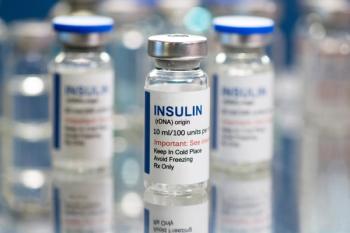
Specialty Pharmacy Accreditation More Important Than Ever
Specialty pharmacy is the fastest growing segment thanks to drug innovation that is driving health care costs.
The practice of pharmacy thrives on a barrage of acronyms and abbreviations, there has always been an alphabet soup of letters floating throughout this business. Whether you are in pharmacy school, working in any of the traditional pharmacy settings, or retired from a career in the pharmacy world, you know the basics TID, PRN, TPN, NKDA, D/C, ICD10, DAW, DME.
That litany was familiar, right? Well, how about REMS, LDD, CMS, SP, URAC, CPPA, or ACHC?
If this grouping was not as easy to identify as the first set, it is because they represent terms commonly found in specialty pharmacy (SP) practice. Specialty pharmacy is the fastest growing segment thanks to drug innovation that is driving health care costs. It is the segment of the pharmacy industry going through the awkward teenage years, trying to figure out what works best; conforming with your peers or taking a risk to do something different and stand against the crowd. Choices and risks are part of life and business, so what does the SP need to know to succeed and how does accreditation make a difference?
Patients using specialty drugs have complex disease states and co-morbidities, including mental health conditions that require coordinated support and care. The prescription costs and access to certain limited distribution drugs (LDD) add to the patient’s challenges when entering the realm of specialty pharmacy.
Many specialty pharmacies focus on treating certain disease states such as rheumatoid arthritis, cancer, and multiple sclerosis and hire and train their staffs to have extensive background knowledge to support the patient base. Other SPs focus in a space treating rare or orphan disease states and may have an exclusive relationship with a manufacturer to support an FDA-mandated REMS (Risk Evaluation and Mitigation Strategy) program to ensure patient education and safety in regards to the medication therapy.
It is important for an SP to design strategies focusing on the treatment and the related medical conditions to create holistic care for every patient. It is also important for the SP to find as many points of differentiation as possible, since competition is fierce.
Specialty drug costs impact all patients and their prescription plan payors and/or health plans, including Medicare or Medicaid plans which require any pharmacy wanting participate in those plans to follow CMS (Centers for Medicare and Medicaid Services) guidelines. Most specialty pharmacies want to be able to provide services to government payers.
To minimize the need for routine surveys conducted by every state survey agency to determine compliance with Medicare conditions, the SP opts for accreditation through a deeming authority, such as the Joint Commission or ACHC (Accreditation Commission for Health Care). Accreditation organizations (AO) such as the Joint Commission(TJC) and the Accreditation Commission for Health Care (ACHC) are granted deeming authority through an application process which is reviewed and approved by CMS. The CMS website lists 9 AOs with deeming authority approval as of February 2016.
Accreditation has been around healthcare for a while, many people associate accreditation with hospitals and the Joint Commission, which was founded in 1951 and is the oldest accrediting body in the nation.
Nearly 25 years ago, as a newly licensed pharmacist working in a retail setting, I can recall a close friend who choose a career in hospital pharmacy bemoaning the preparations the hospital was going through for their JCAHO visit (JCAHO stood for Joint Commission on Accreditation of Healthcare Organizations, today the company simply is known as The Joint Commission) and thinking to myself, “thankfully that will never be me.”
A sage piece of advice…. don’t ever think or utter the words, "it will never happen to me”, as all roads will lead you to where you thought you would never go.
When I made the move from retail pharmacy to specialty pharmacy, the specialty pharmacy I went to work for was not accredited. I had worked there for a few years and over time moved into a management role and I vividly remember the RFP (request for proposal) which a few of us were tasked to complete and submit.
The stumbling block came early in the questions, it read, “what accreditation does the pharmacy hold?” The answer at that moment was none and we knew there was no need to continue filling out the proposal. We were out of the running, as it was clear that any pharmacy responding to the RFP needed to be accredited by an outside organization like Joint Commission, URAC (Utilization Review Accreditation Commission), or ACHC (Accreditation Commission for Health Care) in order to move forward in the proposal process.
That was the wake-up call for the company and within a few weeks of walking away from an RFP for business that fit our service model and expertise, our senior leadership appointed one of my peers to lead the pharmacy on the path towards being an accredited specialty pharmacy.
Certainly, the pharmacy had existing policy and procedures, yet much had to be modified or enhanced to meet the standards set forth by the accrediting bodies. The idea is to raise the bar and set the expectation for every patient to receive safe and effective care at the highest quality delivered through a set of standards.
There is also an employee perspective with accreditation that ensures all employees receive training about their role, quality expectations, constant process and safety improvements, and open communications between all parties to improve service and positively impact patient outcomes. Much of the work specialty pharmacies do to improve service through process improvements or reacting to complaints in order to find opportunities to bolster training would occur with minimal or no documentation of the action plan, implementation, and outcomes.
The standards of the accrediting bodies require formal documentation, presentations/education, and tracking of the activities to demonstrate the impact on improving patient safety and/or care outcomes. If you do not document your action, the question becomes, did you really do it? Where’s the proof?
If you take the time to improve the process, reeducate the pharmacy team, or decrease error rates then get credit for the work and document what was done.
The pharmacy I was part of did received accreditation and not just from one accrediting body, but from two. That is the norm in specialty pharmacy today.
One accreditation gives the pharmacy something tangible to refer to when defining themselves as an SP and the second accreditation shows the commitment to being a serious part of this competitive landscape.
I do wonder, is the only way SPs will be differentiated from one another is based upon the number of accreditation seals displayed on their website? Does that mean specialty goes the way of retail and there will be a few major players after an acquisition fight for every mid-sized, regional, or independent SP to merge with a bigger business, with deeper pockets to obtain 3, 4, or maybe 5 different accreditations?
Who else looks at specialty pharmacy accreditation? The answer is the pharmaceutical industry and health plans (HP) use accreditation as a means to weed out other pharmacies from being eligible to obtain access to a new drug or to be a pharmacy provider to their members.
Pharma needs a quick way to minimize the number of eligible pharmacies, so limiting the starting list to URAC accredited specialty pharmacies would shrink the candidate pool to around 300 to 400. The reason to limiting pharmacies from having access is due in part to the challenges with collecting data and managing the supply chain.
Similarly, HPs want cost savings measures and they love data as well, so carving out their specialty members to one SP provides greater control and fewer points of contact for prior authorization processes, streamlined complaint procedures, and the ability to resolve member issues quickly. Both pharma and HPs appreciate the structure the accrediting body’s standards place on a specialty pharmacy, similar to the requirements their own businesses adhere to in their respective industries.
The process of initial accreditation is a lengthy process and it is essential to dedicate team members to working on policy and procedures that reflect the work being carried out in the pharmacy and how it ties back to the standards required for accreditation.
Depending upon whether the pharmacy is a new start-up or an established business and whether the work to meet the standards is performed internally or with the support of a consultant, it can be at minimum a 6-month process, if not an entire year to obtain full accreditation.
The reaccreditation process is not a walk-the-park, there is no guarantee of approval. Annually, the pharmacy submits an attestation stating the standards are being maintained, process improvement projects are under way, and a routine self-review can be part of the process. At any time during this 3-year window, the accrediting body can return to the pharmacy for a visit to ensure everything is in order.
Every few years, typically a 3-year cycle, the accrediting body will return for an onsite visit that follows the 1 to 2-day agenda, similar to the initial accreditation visit. The pharmacy prepares ahead of the onsite visit by reviewing the updated standards, assures the pharmacy has implemented processes to reflect any changes, and the policy and procedure documentation is up-to-date as well, then submits the documentation to the accrediting body.
A desktop audit is performed by the accrediting body, the goal is to review the submitted policy and procedures for alignment to the standards and provide feedback or seek additional information to support the standards. In order to maintain accreditation and to make the reaccreditation process go smoothly the pharmacy must constantly keep up with the documentation and the commitment to improving the process which impact patient outcomes.
“What goes around comes around,” is a saying many have heard before and some have probably experienced this phenomenon. I am experienced enough now to have my words coming back to haunt me. The thought that I would never have to deal with an accreditation process, like my friend working in the hospital setting was very wrong.
Years ago when the pharmacy gained initial accreditation, I was responsible for getting my departments documentation up-to-date, defining training processes, etc… I was a small part of that large project and learned a lot by going through it. Fast forward a decade or so and I have changed roles.
I now work on a team that has the responsibility to support the reaccreditation process of the specialty locations within my company. The team maintains the policies and procedures, ensuring compliance with the accrediting standards and reminding everyone about documentation.
As a member of this team, I have attended reaccreditation kick-off meetings, participate in the desktop audit or employee files, and even attend some of the onsite pharmacy visits. So much for thinking I would never have to deal with the flurry of activity that comes with accreditation or reaccreditation!
The best part of this job, it is interesting and I am empowered to improve the services being delivered to those we serve.
Works Cited
URAC Accreditation Update: Getting Prepared
Quintin Jessee, PharmD | February 15, 2013
http://www.drugchannels.net/2016/03/the-specialty-pharmacy-accreditation.html
https://www.jointcommission.org/about_us/history.aspx
Newsletter
Stay informed on drug updates, treatment guidelines, and pharmacy practice trends—subscribe to Pharmacy Times for weekly clinical insights.












































































































































































































